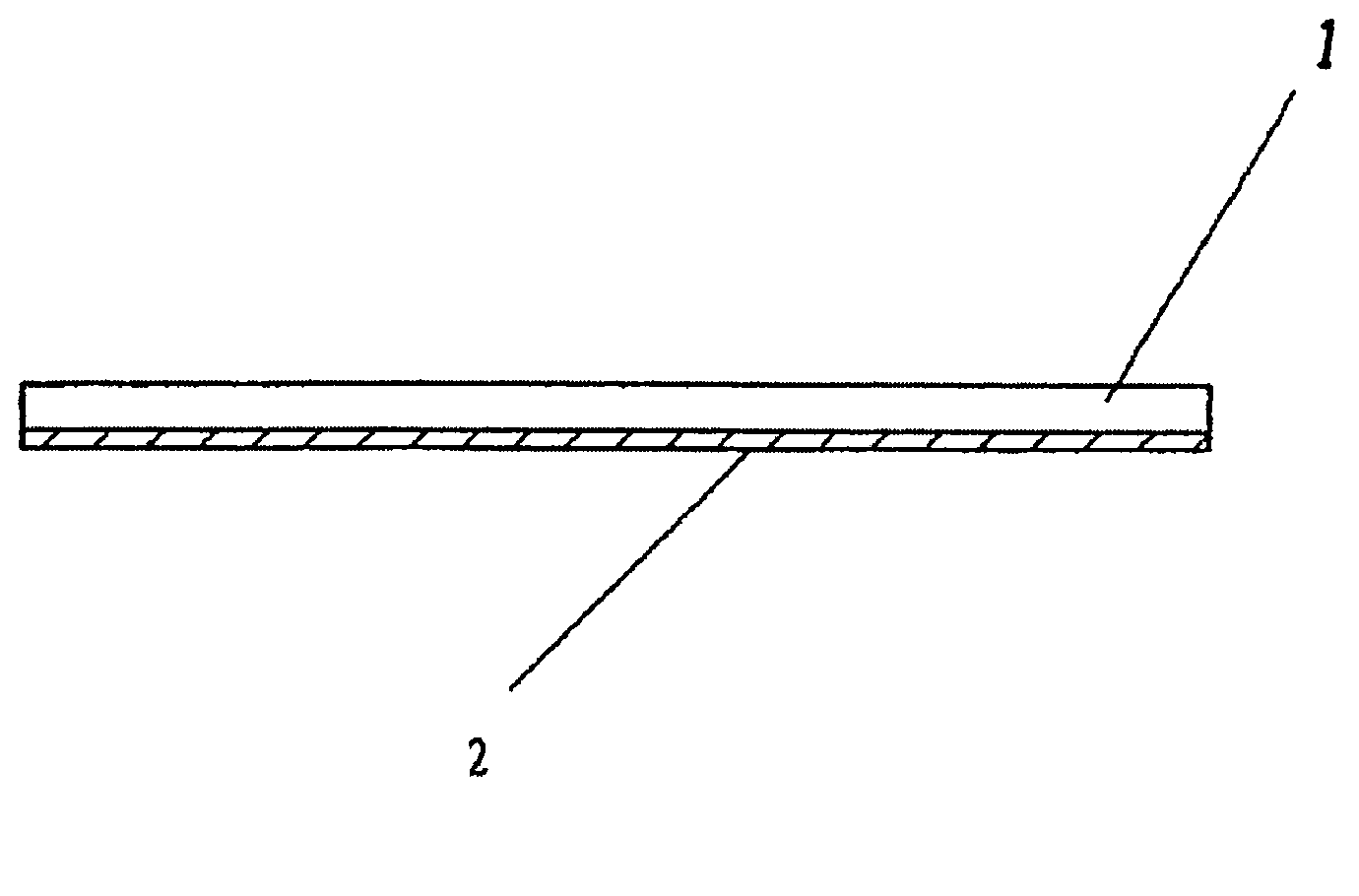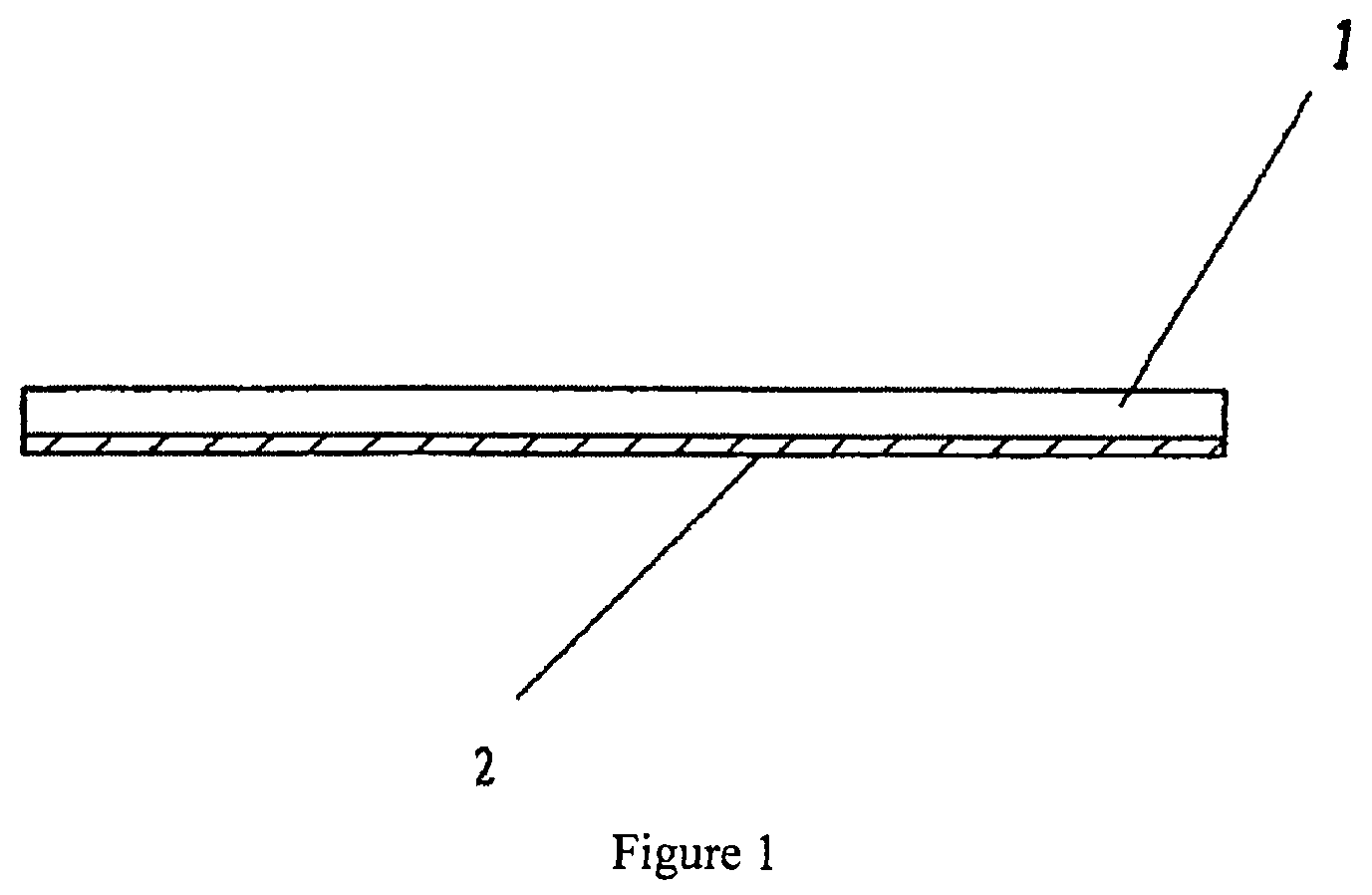Biological wound dressing and method of making
a bio-wund dressing and wound technology, applied in the field of medical prosthesis, can solve the problems of poor tissue compatibility, unsatisfactory treatment effect, poor mechanical strength of collagen, and needing reinforcement with synthetic film, etc., and achieves good biocompatibility, convenient use, and durable flexibility.
- Summary
- Abstract
- Description
- Claims
- Application Information
AI Technical Summary
Benefits of technology
Problems solved by technology
Method used
Image
Examples
example 1
[0033]As shown in FIG. 1, the biological wound dressing comprises a substrate 1 prepared from animal intestinal membrane by crosslinking and fixing with a non-aldehdye fixative and by minimizing antigens, in that a modified active layer 2 containing fibronectin, mucin or vitrein capable of adhering cells or slow-release antibacterial layer 2 is incorporated on the surface of substrate 1.
[0034]The method of preparation of the biological wound dressing of the present invention includes the following steps:
[0035]1. Selection of materials: Fresh animal small intestines (such as submucosa) are collected.
[0036]2. Pretreatment: The small intestines are cleaned and sterilized and the mucous membrane and lower connective tissues are removed to retain the strong membrane, which is trimmed and dried to provide the substrate 1.
[0037]3. Defatting: Fats and fat-soluble impurities in the substrate 1 are extracted with an organic solvent.
[0038]4. Crosslinking fixation: The collagen molecules in the...
PUM
| Property | Measurement | Unit |
|---|---|---|
| hydrogen bonding power | aaaaa | aaaaa |
| water-soluble | aaaaa | aaaaa |
| tissue compatibility | aaaaa | aaaaa |
Abstract
Description
Claims
Application Information
 Login to View More
Login to View More - R&D
- Intellectual Property
- Life Sciences
- Materials
- Tech Scout
- Unparalleled Data Quality
- Higher Quality Content
- 60% Fewer Hallucinations
Browse by: Latest US Patents, China's latest patents, Technical Efficacy Thesaurus, Application Domain, Technology Topic, Popular Technical Reports.
© 2025 PatSnap. All rights reserved.Legal|Privacy policy|Modern Slavery Act Transparency Statement|Sitemap|About US| Contact US: help@patsnap.com



